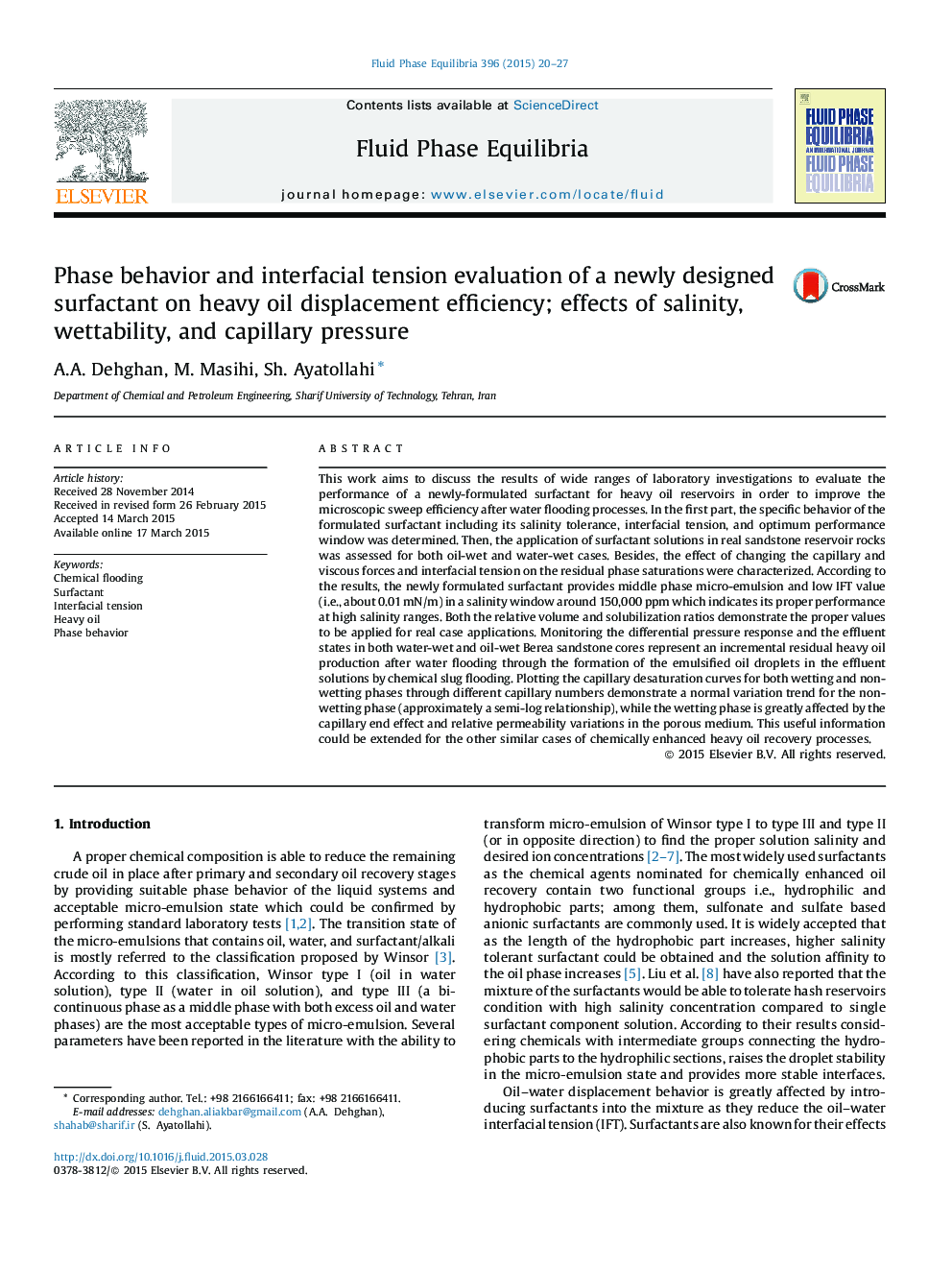| کد مقاله | کد نشریه | سال انتشار | مقاله انگلیسی | نسخه تمام متن |
|---|---|---|---|---|
| 201560 | 460557 | 2015 | 8 صفحه PDF | دانلود رایگان |
This work aims to discuss the results of wide ranges of laboratory investigations to evaluate the performance of a newly-formulated surfactant for heavy oil reservoirs in order to improve the microscopic sweep efficiency after water flooding processes. In the first part, the specific behavior of the formulated surfactant including its salinity tolerance, interfacial tension, and optimum performance window was determined. Then, the application of surfactant solutions in real sandstone reservoir rocks was assessed for both oil-wet and water-wet cases. Besides, the effect of changing the capillary and viscous forces and interfacial tension on the residual phase saturations were characterized. According to the results, the newly formulated surfactant provides middle phase micro-emulsion and low IFT value (i.e., about 0.01 mN/m) in a salinity window around 150,000 ppm which indicates its proper performance at high salinity ranges. Both the relative volume and solubilization ratios demonstrate the proper values to be applied for real case applications. Monitoring the differential pressure response and the effluent states in both water-wet and oil-wet Berea sandstone cores represent an incremental residual heavy oil production after water flooding through the formation of the emulsified oil droplets in the effluent solutions by chemical slug flooding. Plotting the capillary desaturation curves for both wetting and non-wetting phases through different capillary numbers demonstrate a normal variation trend for the non-wetting phase (approximately a semi-log relationship), while the wetting phase is greatly affected by the capillary end effect and relative permeability variations in the porous medium. This useful information could be extended for the other similar cases of chemically enhanced heavy oil recovery processes.
Journal: Fluid Phase Equilibria - Volume 396, 25 June 2015, Pages 20–27
